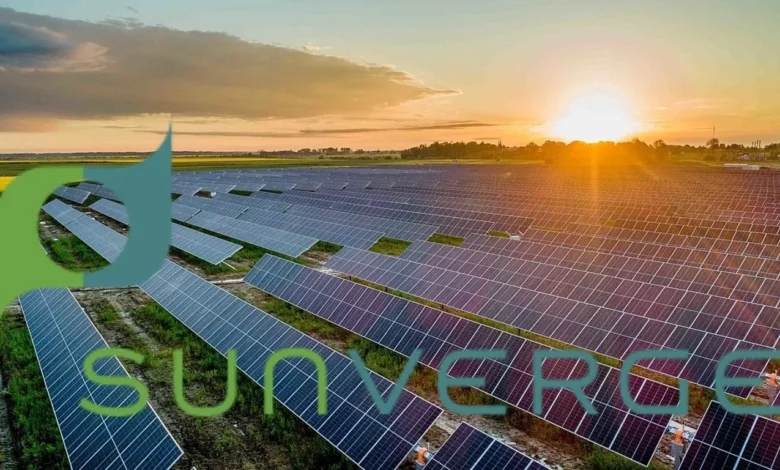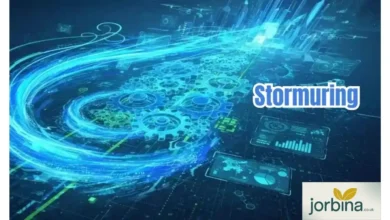Can Sunverge Energy Make the Grid Truly Intelligent?

What if your house could communicate with the electrical grid and make intelligent decisions about when to share, store, or use energy? Imagine if electrical systems could think, react, and stop blackouts before they occur. That is the concept behind Sunverge Energy, a business that thinks the grid can become genuinely intelligent rather than reactive. But will it be able to fulfil that vision? Let’s examine Sunverge Energy’s operations, ownership, employee experience, and role in the larger renewable energy narrative.
Understanding Sunverge Energy
Sunverge Energy builds technology that connects homes, businesses, and utilities through smart energy systems. The company creates hardware and software that let people generate renewable energy (like solar), store it in batteries, and then share it with the grid when it’s needed most. In simple terms, Sunverge’s mission is to make distributed energy resources, things like rooftop panels and home batteries, work together as one coordinated power source. By linking many small energy producers, the grid becomes more flexible and less dependent on massive centralised power plants.
Sunverge Energy offers a comprehensive energy management platform in addition to its product line. Its systems assist utilities in better utilising renewable resources, balancing demand, and lessening the strain on infrastructure. Many experts view the company as a quiet leader in the smart grid revolution because it combines smart software and hardware.
Who Owns Sunverge Energy?

Sunverge Energy was co-founded by Kenneth Munson and Dean Sanders, two innovators who saw the potential of merging renewable power with advanced data systems. The company’s current CEO, Martin Milani, guides the vision and expansion strategy. Over time, Sunverge has attracted major investors, including Siemens Venture Capital, Mitsui & Co., Total Energy Ventures, and SoftBank China Venture Capital. Australian energy giant AGL and the Australian Renewable Energy Agency (ARENA) have also partnered with the company to launch large-scale virtual power plant projects. These partnerships show how Sunverge’s technology isn’t just theoretical; it’s being tested and proven in real-world environments.
The Technology Behind the Intelligence
The Solar Integration System (SIS)
The Solar Integration System (SIS) is one of Sunverge’s most significant inventions. In order to manage both new and existing setups, it combines solar power generation, battery storage, and intelligent management tools. Through the SIS, homeowners can harvest solar energy during the day and use it at a later time, such as during periods of low sunlight or demand. Additionally, it connects to the grid, which aids utilities in better controlling supply and demand. The SIS, to put it briefly, serves as a link between individual energy systems and the wider power grid.
Building Virtual Power Plants (VPPs)
Virtual Power Plants, which are vast networks of interconnected solar and storage systems that function as a single coordinated energy source, are another area in which Sunverge is well-known. When necessary, utilities can draw small amounts of power from thousands of homes rather than depending on a single large plant. This makes the energy system more stable and less taxing on the infrastructure. VPPs can react virtually immediately to periods of high demand, guaranteeing that residences and commercial buildings have the electricity they require without putting an excessive strain on the grid.
Real-Time Control and Data Insights
With Sunverge’s platform, utilities can see how energy is being generated, stored, and used in real time. It is capable of automatically determining when to use, store, and return power to the grid. The grid is considered “intelligent” because of this degree of coordination. It turns into a dynamic dialogue between producers, consumers, and the network itself rather than a one-way power delivery system. Additionally, demand response programmes, in which households and businesses reduce their usage during periods of high demand in exchange for credits or savings, benefit from the company’s software.
Can the Grid Truly Become Intelligent?
For decades, the electric grid has been reliable but static. Power flows one way—from plants to people. Sunverge Energy envisions a more fluid system that responds instantly to changes in supply, demand, and weather. Here’s what makes that possible.
Greater Resilience
When the grid goes down due to storms or technical failures, distributed systems can keep homes powered. If enough homes have Sunverge systems, they can support each other and reduce the risk of widespread outages. Instead of waiting for crews to restore power, neighborhoods with connected solar and battery systems could stay online autonomously.
Lower Peak Demand and Smarter Economics
Traditional grids must handle massive surges in power demand, which often means building more plants or importing electricity from other regions. With distributed energy, that problem shrinks. Sunverge’s systems let utilities tap into stored power from thousands of homes, balancing the grid without overbuilding. It’s a cheaper, more sustainable approach that benefits both utilities and consumers.
Making Renewables Reliable
Renewable energy, like solar and wind, is abundant but unpredictable. When the sun sets or the wind slows, production drops. Sunverge’s intelligent systems store excess power and release it later, smoothing out fluctuations. That helps renewables play a larger, more dependable role in our energy mix.
Barriers to Full Intelligence
Even with great technology, progress takes time. Energy regulations vary by region, and integrating smart systems into old infrastructure can be tricky. There’s also the cost factor;r, though solar and batteries are becoming cheaper, they’re still significant investments. And finally, public understanding and trust must grow. People need to feel confident that these systems are secure, private, and beneficial to their households.
Careers at Sunverge Energy

Sunverge isn’t a massive corporation; it’s a focused, fast-moving team of engineers, analysts, and innovators. Careers there span software engineering, electrical design, systems integration, and energy management. The company looks for people who understand both technology and sustainability. With around 20 to 50 employees, it’s small enough for individuals to make a real impact and large enough to work on global projects.
Working at Sunverge Energy means contributing to something tangible, helping reshape how power moves and how people think about energy. Engineers there aren’t just writing code or building batteries; they’re creating a smarter, more flexible grid for the future. If you’re curious about opportunities in this space, you can explore green tech job boards such as Jorbina, which lists roles in clean energy and emerging sustainability companies.
What the Future Could Look Like
A number of conditions must be met for the grid to reach full intelligence. Clear policies that promote distributed generation and incentivise energy sharing must be established by governments. For storage to become more affordable and durable, technology must keep developing. Adoption and safe sharing of energy data are prerequisites for consumers. Lastly, there needs to be continued strong cooperation between utilities, innovators, and regulators.
If these components are combined, the grid may operate similarly to the internet, with millions of tiny, interconnected nodes continuously exchanging data and energy. The foundation of that change may be Sunverge Energy’s systems, which would turn homes into active participants in a global power network rather than merely energy consumers.
How Sunverge Fits into the Bigger Picture
The energy transition is massive, and Sunverge is part of a much larger ecosystem. Other innovators are also shaping the space. For instance, DXI Energy: Why This Small Company Is Getting Attention highlights another player focusing on energy solutions from a different angle. Together, these efforts form a network of innovation, each company tackling unique challenges to create a cleaner, smarter energy landscape.
Sunverge stands out because it connects renewable production directly to daily life. It doesn’t just store or sell power; it orchestrates it. That’s the difference between generating electricity and managing it intelligently.
Bottom Line
Sunverge Energy might not be a household name yet, but it’s quietly building the technology that could define the future of electricity. By merging renewable generation, smart storage, and advanced data control, it’s turning the grid into something dynamic, something alive. The real question isn’t whether the grid can become intelligent; it’s whether we’ll embrace that intelligence fast enough to meet the growing demand for clean, reliable power.
FAQs
What are the 7 types of renewable energy?
The seven major types are solar, wind, hydro, geothermal, biomass, tidal, and wave energy. Each captures natural processes that renew themselves, making them sustainable over time.
Who invented solar energy?
No single inventor owns that title. The photovoltaic effect was first discovered in 1839 by Edmond Becquerel, a French physicist. Over the next century, researchers refined the concept into the solar cells we use today.
How is energy from the sun renewable?
Because the sun constantly emits light and heat, harnessing that energy doesn’t deplete it. Every day, sunlight hits Earth in quantities far greater than global power demand. Capturing a small portion through panels turns it into clean, renewable electricity.
What is the best renewable energy company to invest in?
There isn’t one universal answer. Some investors prefer large, stable players in solar or wind, while others bet on smaller innovators. Companies like Sunverge Energy attract attention because they merge technology with sustainability. Research financials, growth potential, and your own risk tolerance before deciding.
Is solar energy expensive?
Initial setup costs can be high, but prices have dropped dramatically over the last decade. Government incentives, better technology, and smarter management systems like Sunverge’s make solar more affordable every year. Once installed, solar panels and batteries can save households significant money over time.



